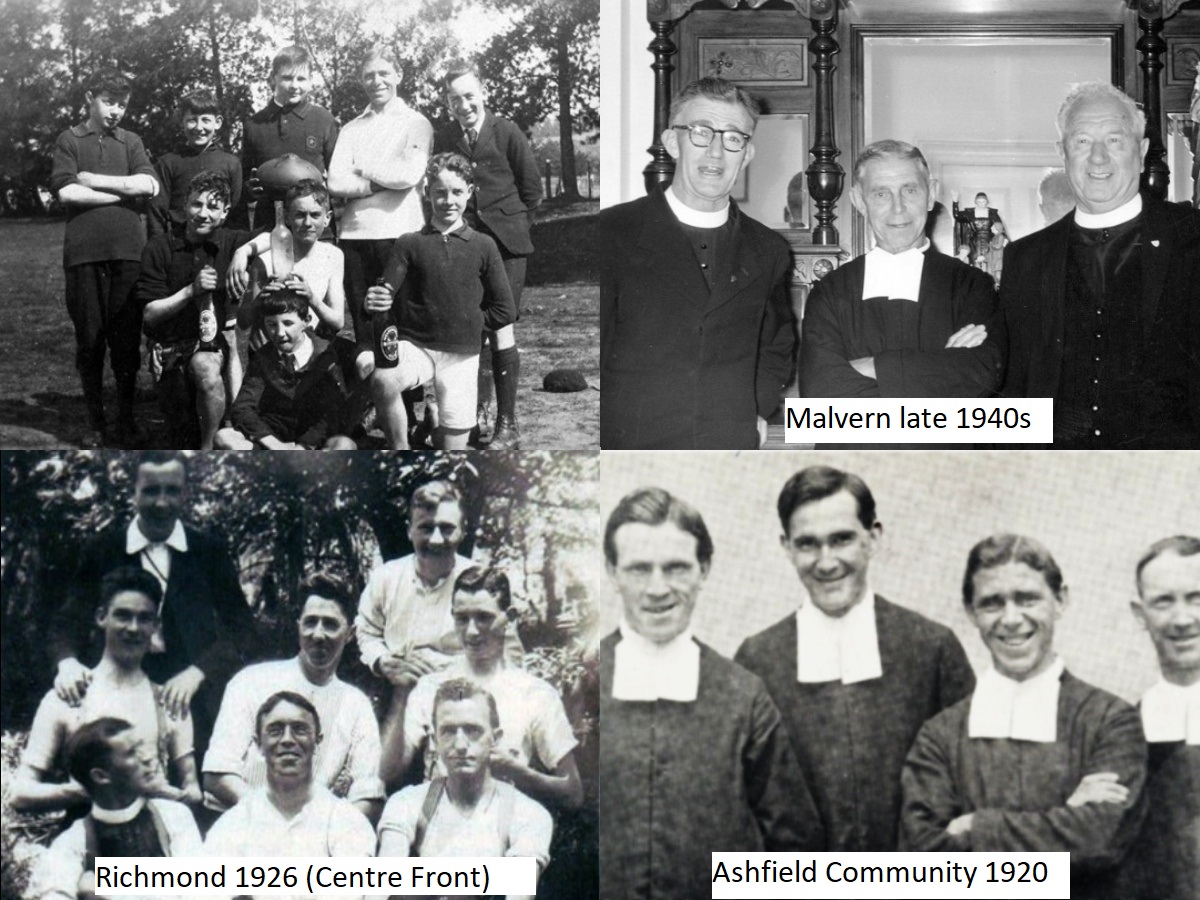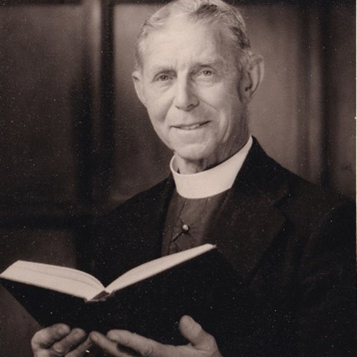Br Jerome Foley: Inspired Teacher, Assured Leader
The Australia of federated states was only a decade old when three Irishmen, dressed in black suits and Roman collars, identifying as Romans (i.e. Catholics), sailed on Christmas Day 1911, funded by a Vincentian parish in Malvern, Victoria. Br Jerome James Foley, born in County Tipperary on 6 August 1886, to Patrick and Johanna, had three years of teacher training at Waterford, and four years classroom work following. Now in his mid- twenties, he was the third volunteer with Br Dunstan Drumm and Leopold Loughran. He was to be an outstanding figure in the fledging District of ANZPPNG.
The Young Brother
The trio disembarked after six weeks, and began teaching in the parish hall, the next day – 5 February 1912 - soon transferred to Stanhope St. There were 54 pupils. The Australian foundation, in its infancy, comprised two school sites – Armidale and Surry Hills in New South Wales, and a small number of Irish Brothers that one could count on two hands. Like many of their compatriots they left home for their religion, families who proceeded them, or adventure and opportunity, in foreign lands and cultures.
The young Jerome fitted into a largely Irish Catholic Church and taught in Melbourne for 3 years. There were short stints at Armidale, Ashfield, Malvern again, and Richmond. From 1923-27 he was Director (that is also Principal) at 3 Brothers’ schools, obviously showing leadership talents.
Fr Hegarty, the Malvern parish priest, keen to start a secondary department, paid for young Jerome to start university studies. The story goes that when the new Provincial Br Paul found out, he transferred young Jerome to Armidale after 3 years, saying the said Brother had already sufficient education to be a good teacher. Jerome passed subjects in 1913, 16 &17, and finally by 1926 gained his B.A., and thus his Diploma Teaching in Victoria. Regularly, he rode his bike to university and back, often then studying later into the night.
In 1927, back at Malvern, with the roll showing 250 students, he was sports-master and taught the natural sciences and mathematics. As Director / Principal from 1929 till 1946 he became legendary.
“Success Bred Success”: De La Salle Malvern
Peter Donovan in his District history judges the 1929 date as significant. For the next 17 years Jerome was either director and/or principal.
“Malvern had built up its reputation for excellence in the academic and sporting fields during the 1920’s…and for vocations to the priestly and religious life…Malvern came to occupy a pre-eminent position in Australian District lore”.
Some graduates were gaining scholarships to university; old boys became lawyers, one a diplomat. An Old Boys Association was formed in Jerome’s first year as principal. Brothers were encouraged in these years to gain university degrees at night, as well as doing their teaching, coaching and religious duties. In 1931 the College entered the Catholic Colleges competition – gaining attention of rivals in football, cricket, swimming, athletics, and handball. The youthful exploits of Jack Dyer- ‘Captain Blood of Richmond Football Club- was a sports leader and student at the time.
The Assistant to the Superior, said in a report in 1931 that the Malvern community was “very fervent, and very well directed by a committed and knowledgeable Director”. Br Provincials - Patrick and Benignus - helped Malvern’s status by appointing Brothers of quality to serve under Jerome. Cassian taught for 18 years from 1930; later principals – Peter, Oswald and Stanislaus- all taught there and “imbibed its spirit” while Jerome was principal. He knew how to fire the spirit and demand high standards.
“Jerome did more than most to cultivate the Malvern spirit” (Donovan). His natural gift for teaching, his easy mixing with people, and an “inner kindness and warmth” under a certain gruffness of manner all enamoured him to others. These features of his character were noted by Anthony Walch, a Brother who lived with him.
The deep interest in the Old Boys of the College was distinctive. In 1940, a great achievement, led by him, was the purchase of the College Tower building and ‘Manresa’ residence from the parish Vincentian Fathers for £8,000. This gave the Brothers more independence, lessened any disputes with clerical authority, and was an incentive for building excellence in the school.
Character of a Brother of His Time
Jerome’s dedication and views on life were similar to many Brothers of the time: ‘regularity’ (strict obedience to the Rule), and “a rigid Irish asceticism” (Walch) were common. Rising before the 5.30am stipulated time, not taking morning tea, and muscle-toning exercises before bedtime were examples of his no-nonsense, duties-approach to religious living as a Brother. Br Christian calls him “a man of austerity” who did not impose his regime on others. Br Stanislaus, a community member, and future principal, pointed out that the Brothers at Malvern were “regular and happy.”
The entry in the Australian Dictionary of Biography summarises him at this time:
“He was an inspirational teacher…(who)had a lively character and intellect, and was a voracious reader, especially walking along his favoured garden paths…Short in stature, he was a bundle of energy and an enthusiastic gardener. He walked miles at weekends… (To foil the prospective Japanese enemy)… in the baking summer of 1942 , he led by example, digging slit trenches in the schoolyard clay soil…Deeply religious and a common-sense Catholic…he was reticent about himself.”
Br. Christian who gave his eulogy in 1975, and had lived with him at Malvern, mentioned with a certain approval his disdain of ‘FIF’ (‘funny internal feelings’), which in Christian’s view had little to do with the certitude and assurance of faith that Jerome evinced. Another side to him was never reticent: his vociferous barracking for the old boys’ football games from the sidelines was very regular. Emotion was certainly present on the sports field.
“A Pillar of the District”: the Provincial & Challenges 1946-1958
Like fellow Irishmen who were Br Visitors before him – Paul Phelan, Patrick Cawley and Benignus White – Jerome Foley was appointed Provincial - in June 1946. This was an era following World War II when Australia was changing rapidly, and growing in its independent identity and prosperity. With massive immigration and economic opportunity, a prolonged period of District expansion ensued in lock-step with the Church and society’s growth.
As a pioneer, as it were, of Brothers’ tertiary qualifications in the 1920’s, one of his immediate goals was furthering Brothers’ education: he doubled to 4 years the trainees’ preparation. The new American Novice Master, Francis de Sales persuaded Jerome to institute a 2-year novitiate which, in hindsight was problematic, in that a second year did not progress young Brothers in any clear teacher training, and this when staffing of schools was becoming critical. He himself doubted the benefits of a second year: he could make tough decisions.
An example of the policy was his institution of ‘Summer Schools’ for Brothers’ on-going education. Brothers with certain expertise led lessons, which recipients tagged, in the afternoon heat, ‘Slumber Schools.’ Jerome led some training sessions himself. John Walch remembers 3 topics: “Be realistic with students in your expectations”, “Never under-estimate the ingenuity of youth”, and “Never let a class see you upset”. (One example was hiding Jerome’s 2 pet dogs in the class cupboard & the dogs barking on hearing the master’s voice during the lesson).
Formation of young Brothers was an abiding concern. The seconding of Br Aloysius Carmody in the early 1950’s was important. He was highly qualified , especially in religious education.
The pressing issue to open more schools with boom Australian immigration led Jerome to ask higher-ups for more Brothers from Ireland; this proved impossible, and was refused. He was aware of the dangers of under-staffing and overwork, but, Donovan suggests, not sufficiently so. One future leader maintained that organisation was not one of the Provincial’s natural talents.
The policy of new openings led to acquiescence to multiple requests of bishops, but to the rejection to several others. As Jerome wrote to a Fr. Stinson in Belmont, W.A.:
Your convincing and enthusing letter would convert a hardened sinner, but, as you state, your problem calls for a first-class miracle and I am afraid even your fervent pleadings cannot succeed in using me as an intermediary…This very year we have had to refuse the offer of schools in every state in Australia…”
In Jerome’s regime as Provincial there were 6 schools opened in NSW, one in each of South Australia, Queensland, Victoria and Western Australia, 3 in New Zealand and 2 in Papua New Guinea. This expansion was specifically encouraged by the higher superior, br. Lawrence O’Toole. These frenetic times saw many migrant Australian students, a rising increase in lay teachers and only a small increase in recruiting new Brothers.
All these issues were handled with Jerome’s steady self-confidence, adaption to needs, and good judgment. At times, there was the persistence and inner urge to push through.
Particularly enervating for the Provincial were the needs to discipline various Brothers, to deal with those who betrayed the trust of students, and to ask for dispensations for those wanting to leave the Institute: “Perhaps the Lord wants to try us, perhaps He is winnowing the chaff from the grain, perhaps we have grown cold in His service. At all events …God is in his heaven. All will be well.” His moral toughness and clear religious faith were evident as a Lasallian leader.
The Later Years
The era of rushing change and massive challenges to the District under Jerome’s visitorship did not abate under the new Visitor, Br Baptist Will. Jerome wanted to return home to Ireland to give the new leader free rein, but was prevailed upon by Br. Lawrence to begin the new college in New Plymouth, N.Z., close enough to offer advice, if needed. Such was the calibre of the man, not having taught for 12 years, and over 70 years of age, that he acceded.
He gave six years as the founding principal of Francis Douglas College, 1959-64, where he was seen as bringing “ an immense fund of experience, erudition, energy and holiness that assured success…He brought a vast knowledge of human nature…he insisted on high standards of work…(but) he never broke a boy’s spirit”. (According to media reports, he also climbed 8,000-foot Mt. Taranaki that crowns a view from the school).
After some month’s break – a holiday home in Ireland – he took up an appointment as second-in-charge of the Novitiate at Castle Hill, where this author can testify, as a novice of the time, that he lectured on the Institute’s history, at least his memoirs of days that he lived that history! He supervised and dug away - with the novices - in the large vegetable garden most days of the week. Years of active retirement in his eighties followed at Castle Hill, and at Beaudesert, Queensland, where reading and gardening occupied his still alert mind. He died peacefully and rather suddenly on September 9, 1975, and in fine spirits, it was reported.
A Lasallian of Courage, Vitality, Assurance
Within his well-ordered and disciplined life, he was remembered as “eminently sociable…(with) a sense of humour boisterous, rather than restrained,” a great reader of biography and history, as well as having an abiding affection for his two cocker spaniel dogs. His strong self-assurance and self-reliance ensured no patience with “humbug.” There appeared to some a “sheer cussedness” in pursuing a course of action.
Those offering a judgment from a wider perspective mentioned his “business-like briskness” (Br Lawrence, Assistant Superior from Ireland), his “indestructability” (Br Harry Reynolds in Malaysia), and a lively memory of his ”cheerful jesting, twinkling eyes, alert speaking, entire humility” (Br McGlade, cfc).

Written by Br Gary Wilson FSC
Sources:
De La Salle Brothers. Archives (Castle Hill)
De La Salle College Malvern. Archives
Donovan, Peter, For Youth and the Poor: The De La Salle Brothers in ANZPPNG 1906-2000 (2001)
Walch, John, Men of De La Salle (1986)
- Log in to post comments

